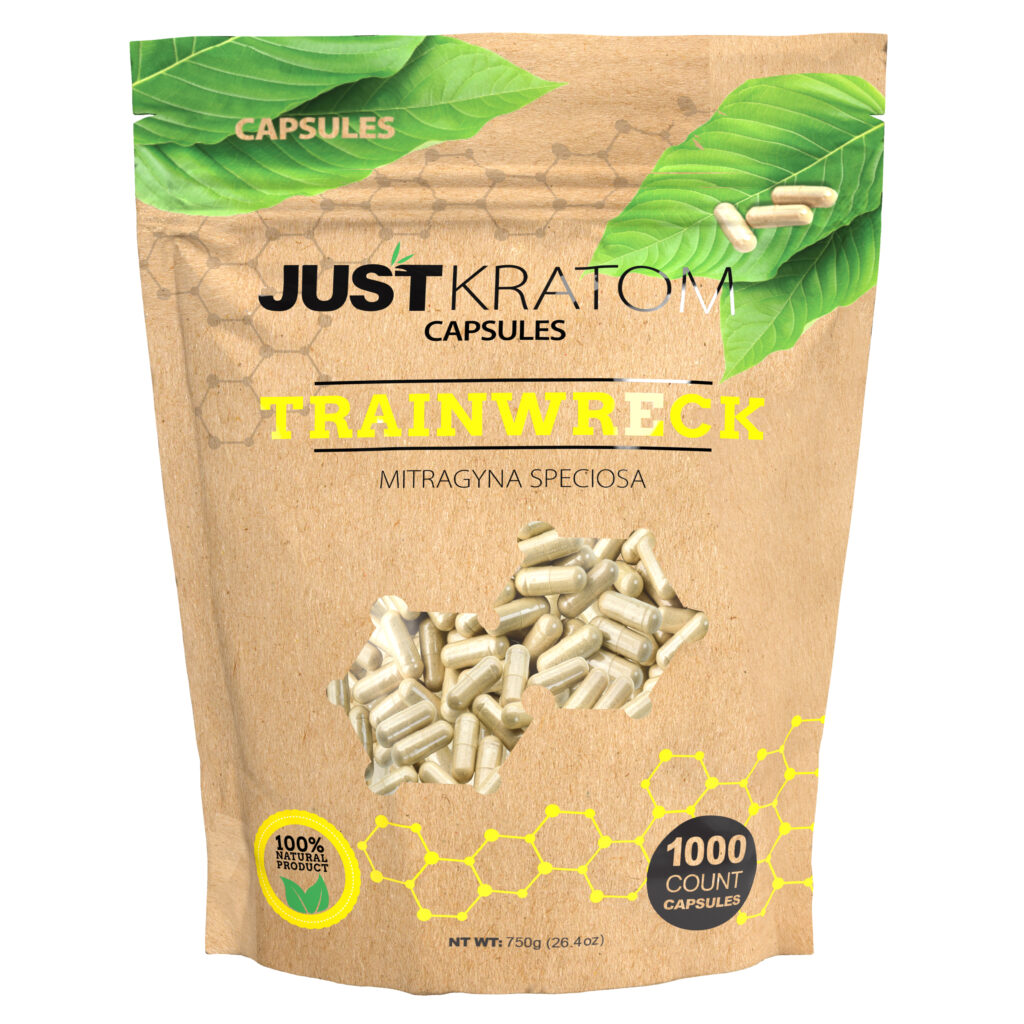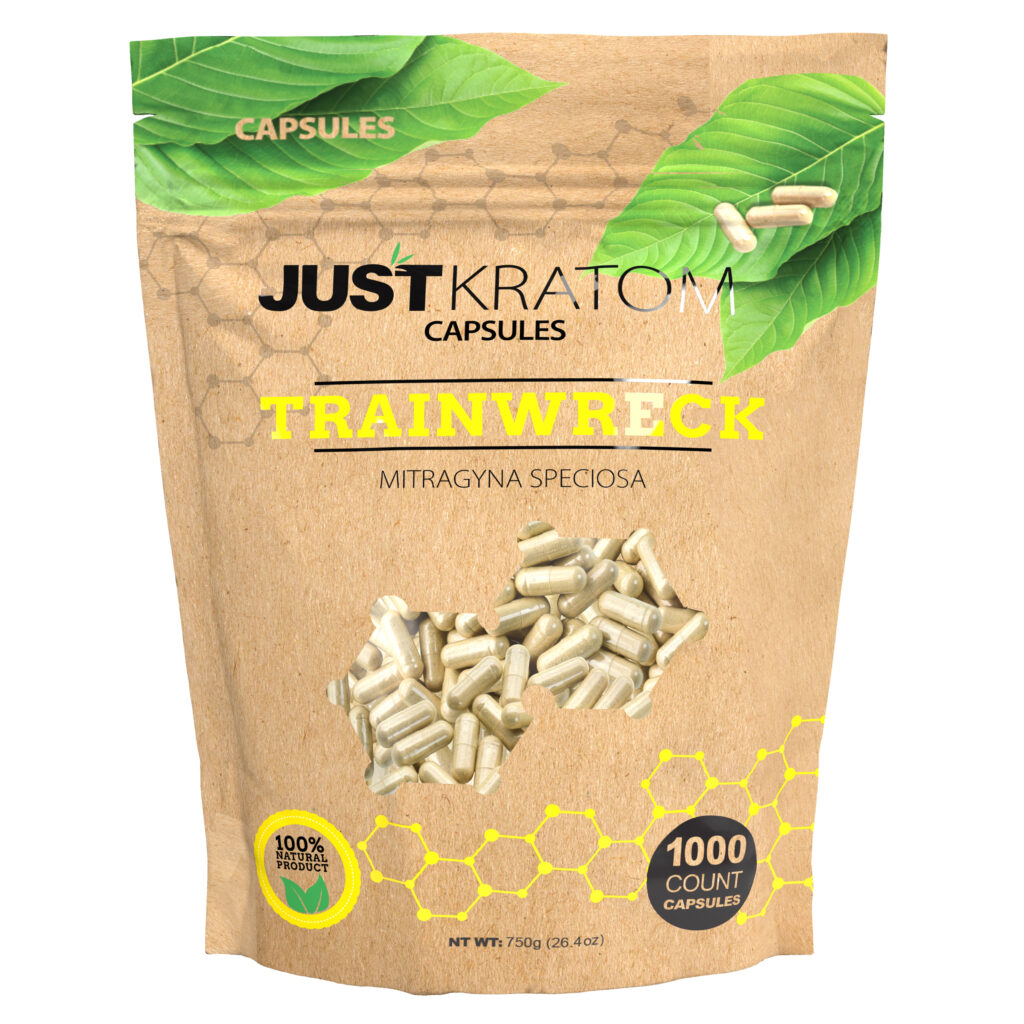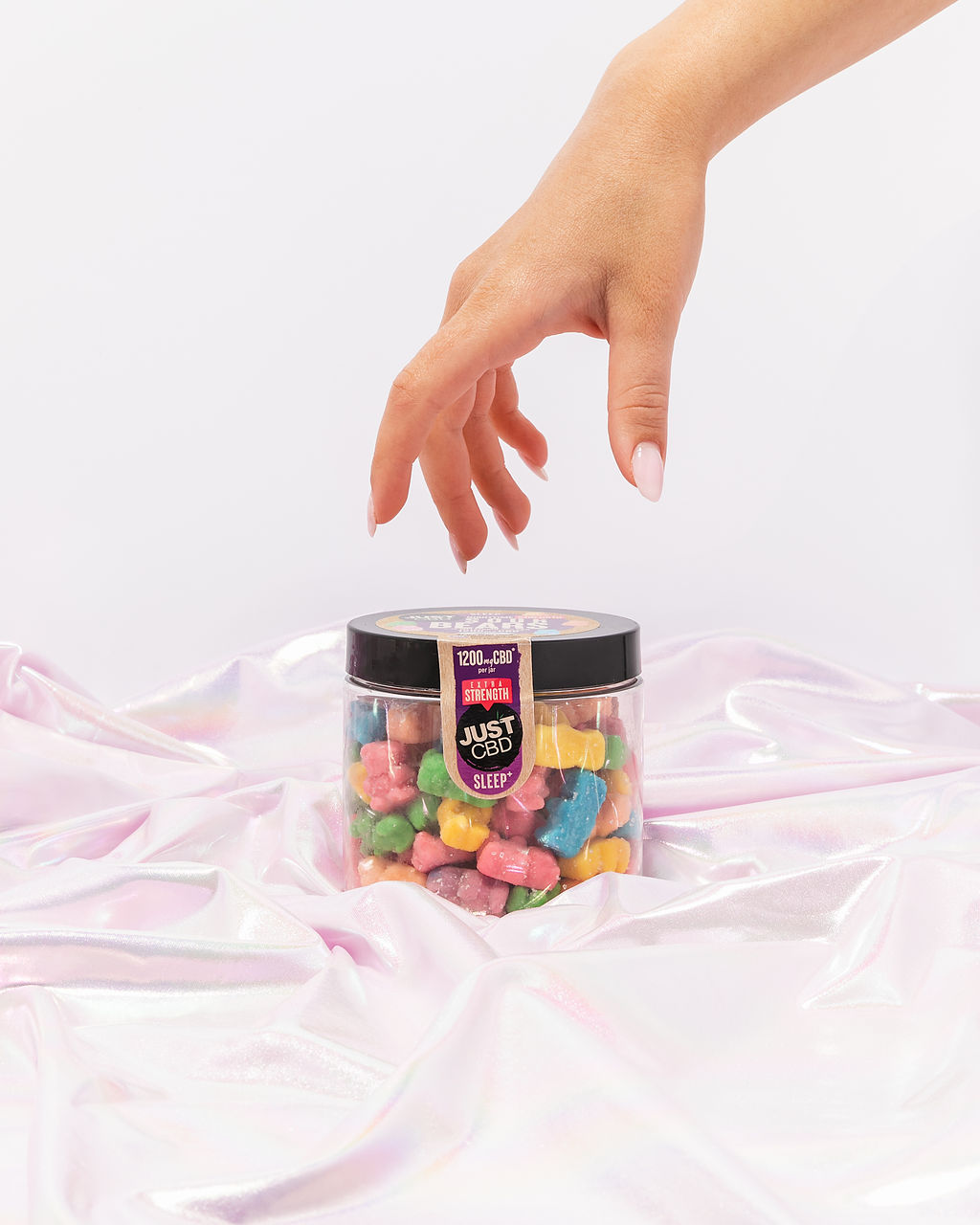How Kratom Capsules Can Help With Post-Workout Recovery

Potential Benefits of Kratom for Post-Workout Recovery
For athletes and fitness enthusiasts, post-workout recovery is crucial for optimal performance and muscle repair. Kratom, a botanical supplement derived from the Mitragyna speciosa tree, has gained attention for its potential benefits in aiding this process.
Muscle Soreness Relief
Katorm’s alkaloids, particularly mitragynine and 7-hydroxymitragynine, are believed to interact with opioid receptors in the brain and body. This interaction may contribute to kratom’s analgesic (pain-relieving) effects, potentially making it helpful for managing muscle soreness that commonly arises after strenuous exercise.
Additionally, kratom is thought to possess anti-inflammatory properties. Inflammation is a natural part of the muscle recovery process, but excessive inflammation can hinder healing and prolong discomfort. By reducing inflammation, kratom might accelerate muscle repair and shorten the recovery time.
Reduced Inflammation
For athletes and fitness enthusiasts, post-workout recovery is crucial for optimal performance and muscle repair. Kratom, a botanical supplement derived from the Mitragyna speciosa tree, has gained attention for its potential benefits in aiding this process.
Katorm’s alkaloids, particularly mitragynine and 7-hydroxymitragynine, are believed to interact with opioid receptors in the brain and body. This interaction may contribute to kratom’s analgesic (pain-relieving) effects, potentially making it helpful for managing muscle soreness that commonly arises after strenuous exercise.
Additionally, kratom is thought to possess anti-inflammatory properties. Inflammation is a natural part of the muscle recovery process, but excessive inflammation can hinder healing and prolong discomfort. By reducing inflammation, kratom might accelerate muscle repair and shorten the recovery time.
- Pain Relief: Kratom’s potential analgesic effects may help alleviate post-workout muscle soreness and discomfort, allowing for quicker return to activity.
- Reduced Inflammation: By mitigating excessive inflammation, kratom could promote faster healing of muscles and minimize recovery time.
Pain Management
For athletes and fitness enthusiasts, post-workout recovery is crucial for optimal performance and muscle repair. Kratom, a botanical supplement derived from the Mitragyna speciosa tree, has gained attention for its potential benefits in aiding this process.
Katorm’s alkaloids, particularly mitragynine and 7-hydroxymitragynine, are believed to interact with opioid receptors in the brain and body. This interaction may contribute to kratom’s analgesic (pain-relieving) effects, potentially making it helpful for managing muscle soreness that commonly arises after strenuous exercise.
Additionally, kratom is thought to possess anti-inflammatory properties. Inflammation is a natural part of the muscle recovery process, but excessive inflammation can hinder healing and prolong discomfort. By reducing inflammation, kratom might accelerate muscle repair and shorten the recovery time.
Energy Boost and Reduced Fatigue
Kratom has shown potential as an aid in post-workout recovery due to its possible pain-relieving and anti-inflammatory effects.
The alkaloids mitragynine and 7-hydroxymitragynine found in kratom may interact with opioid receptors, potentially reducing muscle soreness common after intense exercise.
Additionally, kratom’s potential anti-inflammatory properties could help manage excessive inflammation, a natural part of the recovery process that, if left unchecked, can delay healing and prolong discomfort.
How Kratom Capsules Work for Post-Workout Recovery
Kratom has shown potential as an aid in post-workout recovery due to its possible pain-relieving and anti-inflammatory effects.
The alkaloids mitragynine and 7-hydroxymitragynine found in kratom may interact with opioid receptors, potentially reducing muscle soreness common after intense exercise.
Additionally, kratom’s potential anti-inflammatory properties could help manage excessive inflammation, a natural part of the recovery process that, if left unchecked, can delay healing and prolong discomfort.
Absorption and Metabolism
Kratom capsules offer a convenient way to consume kratom for its potential post-workout recovery benefits. When taken orally, the capsules dissolve in the stomach, releasing kratom alkaloids into the bloodstream for absorption.
The rate of absorption may vary depending on factors such as individual metabolism and the specific formulation of the capsules. After absorption, these alkaloids, particularly mitragynine and 7-hydroxymitragynine, travel throughout the body and interact with opioid receptors in the brain and muscles.

This interaction is believed to contribute to kratom’s potential pain-relieving and anti-inflammatory effects, which can aid in muscle recovery.
Interaction with the Endocannabinoid System
Kratom capsules offer a convenient way to consume kratom for its potential post-workout recovery benefits. When taken orally, the capsules dissolve in the stomach, releasing kratom alkaloids into the bloodstream for absorption.
The rate of absorption may vary depending on factors such as individual metabolism and the specific formulation of the capsules. After absorption, these alkaloids, particularly mitragynine and 7-hydroxymitragynine, travel throughout the body and interact with opioid receptors in the brain and muscles.
This interaction is believed to contribute to kratom’s potential pain-relieving and anti-inflammatory effects, which can aid in muscle recovery.
The endocannabinoid system (ECS) is a complex network of receptors, enzymes, and neurotransmitters found throughout the body. It plays a crucial role in regulating various physiological processes, including pain perception, inflammation, mood, and appetite.
- Interaction with CB1 Receptors: Kratom alkaloids, particularly mitragynine, have shown affinity for binding to cannabinoid receptor 1 (CB1) receptors. These receptors are abundant in the brain and central nervous system, and their activation is associated with pain relief and analgesic effects.
- Impact on Endocannabinoid Levels: Studies suggest that kratom may influence the levels of endocannabinoids, naturally occurring compounds within the ECS.
Impact on Pain Receptors
Kratom capsules offer a convenient way to consume kratom for its potential post-workout recovery benefits. When taken orally, the capsules dissolve in the stomach, releasing kratom alkaloids into the bloodstream for absorption.
The rate of absorption may vary depending on factors such as individual metabolism and the specific formulation of the capsules. After absorption, these alkaloids, particularly mitragynine and 7-hydroxymitragynine, travel throughout the body and interact with opioid receptors in the brain and muscles.
This interaction is believed to contribute to kratom’s potential pain-relieving and anti-inflammatory effects, which can aid in muscle recovery.
Kratom capsules offer a convenient way to consume kratom for its potential post-workout recovery benefits. When taken orally, the capsules dissolve in the stomach, releasing kratom alkaloids into the bloodstream for absorption.
The rate of absorption may vary depending on factors such as individual metabolism and the specific formulation of the capsules. After absorption, these alkaloids, particularly mitragynine and 7-hydroxymitragynine, travel throughout the body and interact with opioid receptors in the brain and muscles.
This interaction is believed to contribute to kratom’s potential pain-relieving and anti-inflammatory effects, which can aid in muscle recovery.
The endocannabinoid system (ECS) is a complex network of receptors, enzymes, and neurotransmitters found throughout the body. It plays a crucial role in regulating various physiological processes, including pain perception, inflammation, mood, and appetite.
- Interaction with CB1 Receptors: Kratom alkaloids, particularly mitragynine, have shown affinity for binding to cannabinoid receptor 1 (CB1) receptors. These receptors are abundant in the brain and central nervous system, and their activation is associated with pain relief and analgesic effects.
- Impact on Endocannabinoid Levels: Studies suggest that kratom may influence the levels of endocannabinoids, naturally occurring compounds within the ECS.
Dosage and Usage Guidelines for Post-Workout Recovery
Understanding proper dosage and usage guidelines for kratom is essential when incorporating it into a post-workout recovery routine. Factors like individual body weight, metabolism, and desired effects should be considered when determining the appropriate dosage.
Recommended Dosage Ranges
Kratom has shown potential as an aid in post-workout recovery due to its possible pain-relieving and anti-inflammatory effects.
The alkaloids mitragynine and 7-hydroxymitragynine found in kratom may interact with opioid receptors, potentially reducing muscle soreness common after intense exercise.

Additionally, kratom’s potential anti-inflammatory properties could help manage excessive inflammation, a natural part of the recovery process that, if left unchecked, can delay healing and prolong discomfort.
Kratom capsules offer a convenient way to consume kratom for its potential post-workout recovery benefits. When taken orally, the capsules dissolve in the stomach, releasing kratom alkaloids into the bloodstream for absorption.
The rate of absorption may vary depending on factors such as individual metabolism and the specific formulation of the capsules. After absorption, these alkaloids, particularly mitragynine and 7-hydroxymitragynine, travel throughout the body and interact with opioid receptors in the brain and muscles.
This interaction is believed to contribute to kratom’s potential pain-relieving and anti-inflammatory effects, which can aid in muscle recovery.
Recommended dosage ranges for post-workout kratom use are highly individualized and can vary significantly based on factors such as:
- Body Weight: Generally, individuals with higher body weights may require larger doses to experience desired effects.
- Experience Level: Those new to kratom may start with lower dosages and gradually increase as needed, while more experienced users might have a different starting point.
- Desired Effects: The desired outcome (pain relief versus mood enhancement) can influence dosage.
- Potency of Kratom Strain: Different kratom strains have varying alkaloid concentrations, impacting their strength and potency.
It’s important to consult with a healthcare professional or experienced user for guidance on determining the most appropriate dosage for individual needs and circumstances.
Begin with a low dose (1-2 grams) and observe the effects before increasing it. If desired effects are not felt, a gradual increase of 0.5-1 gram can be tried.
Never exceed recommended dosages, as excessive consumption can lead to adverse effects such as nausea, dizziness, or anxiety.
Timing of Consumption
For athletes and fitness enthusiasts, post-workout recovery is crucial for optimal performance and muscle repair. Kratom, a botanical supplement derived from the Mitragyna speciosa tree, has gained attention for its potential benefits in aiding this process.
Katorm’s alkaloids, particularly mitragynine and 7-hydroxymitragynine, are believed to interact with opioid receptors in the brain and body. This interaction may contribute to kratom’s analgesic (pain-relieving) effects, potentially making it helpful for managing muscle soreness that commonly arises after strenuous exercise.
Additionally, kratom is thought to possess anti-inflammatory properties. Inflammation is a natural part of the muscle recovery process, but excessive inflammation can hinder healing and prolong discomfort. By reducing inflammation, kratom might accelerate muscle repair and shorten the recovery time.
Kratom capsules offer a convenient way to consume kratom for its potential post-workout recovery benefits. When taken orally, the capsules dissolve in the stomach, releasing kratom alkaloids into the bloodstream for absorption.
The rate of absorption may vary depending on factors such as individual metabolism and the specific formulation of the capsules. After absorption, these alkaloids, particularly mitragynine and 7-hydroxymitragynine, travel throughout the body and interact with opioid receptors in the brain and muscles.
This interaction is believed to contribute to kratom’s potential pain-relieving and anti-inflammatory effects, which can aid in muscle recovery.
Recommended dosage ranges for post-workout kratom use are highly individualized and can vary significantly based on factors such as:
- Body Weight: Generally, individuals with higher body weights may require larger doses to experience desired effects.
- Experience Level: Those new to kratom may start with lower dosages and gradually increase as needed, while more experienced users might have a different starting point.
- Desired Effects: The desired outcome (pain relief versus mood enhancement) can influence dosage.
- Potency of Kratom Strain: Different kratom strains have varying alkaloid concentrations, impacting their strength and potency.
It’s important to consult with a healthcare professional or experienced user for guidance on determining the most appropriate dosage for individual needs and circumstances.
Begin with a low dose (1-2 grams) and observe the effects before increasing it. If desired effects are not felt, a gradual increase of 0.5-1 gram can be tried.
Never exceed recommended dosages, as excessive consumption can lead to adverse effects such as nausea, dizziness, or anxiety.
Potential Side Effects and Precautions
While kratom is often discussed for its potential pain relief and mood-boosting properties, it’s crucial to understand both the potential benefits and risks associated with its use, especially in the context of post-workout recovery.
Kratom works by interacting with opioid receptors in the brain and body. This interaction may contribute to its analgesic effects, potentially helping to alleviate muscle soreness after exercise. Additionally, some studies suggest kratom might have anti-inflammatory properties, which could aid in reducing inflammation associated with muscle damage and promoting faster healing.
**However, it’s important to note that:**
* **Research on kratom is still limited**, and more studies are needed to fully understand its long-term effects and potential risks.
* **Kratom can have side effects,** including nausea, dizziness, constipation, and anxiety. In some cases, it can also cause more serious issues like liver damage or withdrawal symptoms when stopped abruptly.
* **Kratom’s legal status varies depending on location.** It is illegal in some countries and states.
**Before using kratom:**
* **Consult with a healthcare professional**, especially if you have pre-existing medical conditions, are taking medications, or are pregnant or breastfeeding.
* **Start with a low dose** and gradually increase it as needed to assess your tolerance and potential side effects.
* **Be aware of the legal status of kratom in your area.**
* **Obtain kratom from reputable sources** to ensure quality and safety.
Remember that while kratom may offer potential benefits for post-workout recovery, it’s not a risk-free option. A balanced approach involving proper exercise routines, nutrition, hydration, and adequate rest remains crucial for optimal muscle repair and overall fitness.
Alternatives to Kratom Capsules for Post-Workout Recovery
While kratom capsules offer a potentially convenient way to experience the possible benefits of kratom for post-workout recovery, exploring alternative options might be wise.
These alternatives can provide similar advantages without the potential risks and uncertainties associated with kratom.
- Tart Cherry Juice: Tart cherries are rich in antioxidants and anti-inflammatory compounds that may help reduce muscle soreness, improve recovery time, and alleviate inflammation after exercise.
- Ginger:** Ginger has long been used for its anti-inflammatory properties, potentially aiding in pain relief and reducing muscle swelling following workouts.
- Turmeric: Containing curcumin, a potent anti-inflammatory compound, turmeric may help reduce muscle soreness and inflammation after exercise.
- Cold Therapy: Applying ice packs or taking cold baths can constrict blood vessels, reducing inflammation and pain.
- Epsom Salt Baths: Epsom salt baths are believed to relax muscles and help alleviate soreness by providing magnesium, which plays a role in muscle function.
Other Natural Supplements
While kratom capsules offer a potentially convenient way to experience the possible benefits of kratom for post-workout recovery, exploring alternative options might be wise. These alternatives can provide similar advantages without the potential risks and uncertainties associated with kratom.
For athletes and fitness enthusiasts seeking natural ways to support post-workout recovery, several effective alternatives exist:
- Tart Cherry Juice: Tart cherries are rich in antioxidants and anti-inflammatory compounds like anthocyanins. Studies suggest tart cherry juice can help reduce muscle soreness, improve recovery time, and alleviate inflammation after exercise.
- Ginger:** Ginger has long been used for its anti-inflammatory properties, potentially aiding in pain relief and reducing muscle swelling following workouts. The active compound, gingerol, is believed to be responsible for these benefits.
- Turmeric: Containing curcumin, a potent anti-inflammatory compound, turmeric may help reduce muscle soreness and inflammation after exercise by targeting inflammatory pathways.
- Cold Therapy: Applying ice packs or taking cold baths can constrict blood vessels, reducing inflammation and pain.
- Epsom Salt Baths: Epsom salt baths are believed to relax muscles and help alleviate soreness by providing magnesium, which plays a role in muscle function.
- Protein Shakes:** Consuming protein shortly after a workout is essential for muscle repair and growth. Protein shakes provide a convenient and readily absorbable source of protein.
- Glutamine Supplements: Glutamine is an amino acid that may help reduce muscle damage and soreness. It plays a role in tissue repair and recovery.
Lifestyle Modifications and Therapies
Alternatives to Kratom Capsules for Post-Workout Recovery
Post-workout recovery is crucial for athletes and fitness enthusiasts to optimize performance and muscle repair. While kratom has gained attention for its potential benefits in aiding this process, several effective alternatives exist that provide similar advantages without the potential risks associated with kratom.
**Natural Remedies:**
* **Tart Cherry Juice:** Rich in antioxidants and anti-inflammatory compounds like anthocyanins, tart cherry juice can help reduce muscle soreness, improve recovery time, and alleviate inflammation after exercise.
* **Ginger:** Known for its anti-inflammatory properties, ginger may aid in pain relief and reduce muscle swelling following workouts. The active compound, gingerol, is responsible for these benefits.
* **Turmeric:** Containing curcumin, a potent anti-inflammatory compound, turmeric can help reduce muscle soreness and inflammation after exercise by targeting inflammatory pathways.
**Therapies:**
* **Cold Therapy:** Applying ice packs or taking cold baths constricts blood vessels, reducing inflammation and pain.
* **Epsom Salt Baths:** Epsom salt baths are believed to relax muscles and alleviate soreness by providing magnesium, which plays a role in muscle function.
**Supplements:**
* **Protein Shakes:** Consuming protein shortly after a workout is essential for muscle repair and growth. Protein shakes offer a convenient and readily absorbable source of protein.
* **Glutamine Supplements:** Glutamine is an amino acid that may help reduce muscle damage and soreness by supporting tissue repair and recovery.
Remember to consult with a healthcare professional before making any significant changes to your diet or supplement regimen, especially if you have underlying health conditions.
Order Kratom capsules for a boost in stamina
- CBD Gummy Sweets For Stress Relief And Relaxation - September 15, 2025
- Bum Filler Injections In Merstham Surrey - September 13, 2025
- How To Maintain Results From A Cosmelan Depigmentation Peel In The UK - September 11, 2025
Author
Related Posts
What Makes Kratom Capsules Popular For Natural Pain Relief?
Chemical Composition and Potential Benefits Kratom, a tropical tree native to Southeast Asia, has gained popularity in recent years as a natural...
Read out all